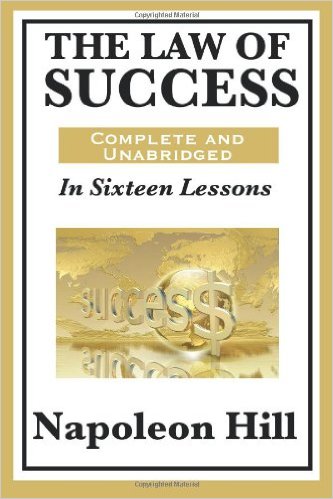Cách đây mấy hôm tôi tình cờ đọc bài viết của James Altucher về 100 quy tắc cho entrepreneurs (những người khởi nghiệp). Nhờ lại thì trước đây có đọc một cuốn sách của ông này nhưng lúc đó không thấy ấn tượng lắm. Tuy nhiên lần đọc này về những bài blog của ông thì thấy hóm hỉnh và ấn tượng hơn.

Dưới đây là một số quy tắc trong danh sách này mà tôi thấy khá thú vị:
A) It’s not fun. I’m not going to explain why it’s not fun. These are rules. Not theories. I don’t need to prove them.
But there’s a strong chance you can hate yourself throughout the process of being an entrepreneur. Keep sharp objects and pills away during your worst moments.
A) Khởi nghiệp không phải là chuyện thú vị. Tôi sẽ không giải thích vì sao nó không vui. Đây là nhưng quy tắc, chứ không phải lí thuyết. Tôi không cần phải chứng minh nó.
Nhưng có một khả năng cao rằng bạn sẽ thù ghét chính mình trong xuyên suốt quá trình khởi nghiệp. Giữ những vật nhọn và những viên thuốc xa tầm tay trong những giây phút tồi tệ nhất của mình.
E) It’s OK to fail. Start over. Hopefully before you run out of money. Hopefully before you take in investor money. Or, don’t worry about it. Come up with new ideas. Start over.
E) Thất bại cũng OK. Bắt đầu lại. Hi vọng là (bạn thất bại) trước khi bạn hết tiền. Hi vọng là trước khi nhận tiền của các nhà đầu tư. Hoặc là, đừng lo nghĩ về những điều đó. Nghĩ ra những ý tưởng mới. Bắt đầu lại.
F) Be profitable. Try to be profitable immediately. This seems obvious but it isn’t. Try not to raise money. That money is expensive.
F) Ở trong tình trạng có lời. Cố gắng có lời ngay. Điều này nghe có vẻ hiển nhiên nhưng nó thật sự không. Cố gắng không cần tiền đầu tư. Những khoản tiền đó đắt đỏ lắm.
J) Don’t use a PR firm. Except maybe as a secretary. You are the PR for your company. You are your company’s brand. You personally.
J) Đừng sử dụng dịch vụ PR. Có thể trừ khi là sử dụng như một thư kí. Bạn chính là người đại diện cho công ty của bạn. Bạn là thương hiệu của công ty bạn. Chính cá nhân bạn.
Q) Hire local. You need to be able to see and talk to your programmers. Don’t outsource to India. I love India. But I won’t hire programmers from there while I’m living in the US.
Q) Tuyển dụng nơi bạn làm việc. Bạn cần phải gặp và nói chuyện với những người lập trình viên của bạn. Đừng outsource ra Ấn Độ. Tôi yêu Ấn Độ. Nhưng tôi sẽ không tuyển lập trình viên ở Ấn Độ khi tôi đang số ở Mỹ.
R) Sleep. Don’t buy into the 20 hours a day entrepreneur myth. You need to sleep 8 hours a day to have a focused mind.
If you are working 20 hours a day, then that means you have flaws in how you are managing your time. You can argue about this but it’s true.
R) Ngủ. Đừng tin huyền thoại doanh nhân làm việc 20 tiếng mỗi ngày. Bạn cần ngủ 8 tiếng mỗi ngày để có một đầu óc tập trung.
Nếu bạn đang làm việc 20 tiếng mỗi ngày, điều này có nghãi là bạn đang mắc lỗi trong việc quản lí thời gian của mình. Bạn có thể tranh cãi về điều này nhưng nó thật sự đúng.
AA) Give employees structure. Let each employee know how his or her path to success can be achieved. All of them will either leave you or replace you eventually. That’s OK. Give them the guidelines how that might happen. Tell them how they can get rich by working for you.
AA) Tạo cấu trúc cho nhân viên của bạn. Hãy để mỗi nhân viên biết cách con đường đến thành công của anh ta hay cô ta sẽ đạt được như thế nào. Tất cả nhân viên của bạn cuối cùng rồi sẽ hoặc là bỏ bạn hoặc là thay thế bạn. Điều đó OK. Cho nhân viên của bạn hướng dẫn về việc những điều đó sẽ diễn ra như thế nào. Nói cho họ biết cách họ sẽ trở nên giàu có làm việc cho bạn.
NN) You have no more free time. In your free time you are thinking of new ideas for customers, new ideas for services to offer, new products.
NN) Bạn sẽ không còn có thời gian rảnh nữa. Trong thời gian rãnh bạn đang (bận) suy nghĩ về những ý tưởng mới cho khách hàng, những ý tưởng mới về những dịch vụ để cung cấp, những sản phẩm mới.
XX) Execution is a dime a dozen. If you have an idea worth pursuing, then just make it. You can build any website for cheap. Hire a programmer and make a demo. Get at least one person to sign up and use your service. If you want to make Facebook pages for plumbers, find one plumber who will give you $10 to make his Facebook page. Just do it.
Fail quickly. Good ideas are HARD. It’s execution that is a dime a dozen.
XX) Thực hiện là một chuyện thường thôi. Nếu bạn có một ý tưởng đáng theo đuổi, đơn giản là thực hiện nó. Bạn có thể xây dựng bất kỳ trang web nào với giá rẻ. Thuê một lập trình viên và thực hiện một bản demo. Tìm ít nhất một người để đăng ký và sử dụng dịch vụ của bạn. Nếu bạn muốn tạo những trang Facebook Page cho thợ sửa ống nước, tìm một thợ ống nước chịu trả bạn 10 đô la để làm trang Facebook cho ông ta. Cứ làm đi.
Hãy thất bại nhanh. Có ý tưởng tốt là CHUYỆN KHÓ. Thực hiện là một chuyện cũng thường thôi.
III) Don’t worry about anyone stealing your ideas. Ideas are worthless anyway. It’s OK to steal something that’s worthless.
III) Đừng lo lắng về việc ai đó sẽ ăn cắp ý tưởng của bạn. Ý tưởng dù sao cũng không có giá trị gì. OK cho việc ăn cắp một thứ không có giá trị.
Đọc toàn bộ bài này ở đây.






